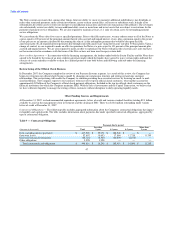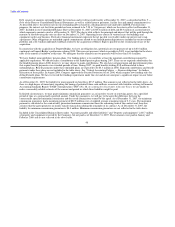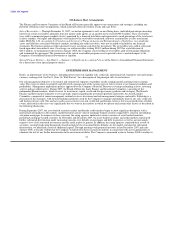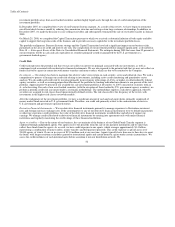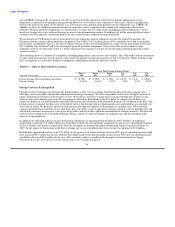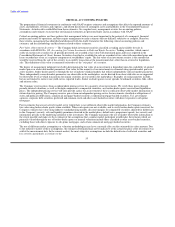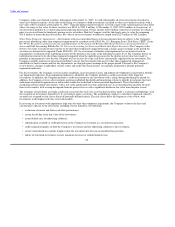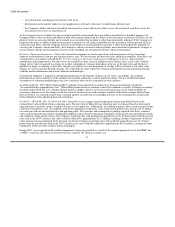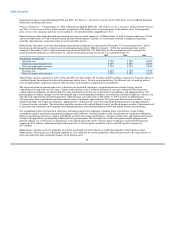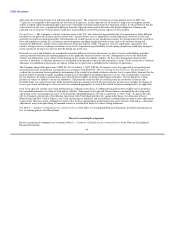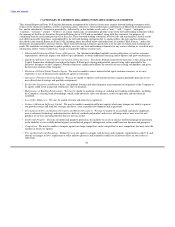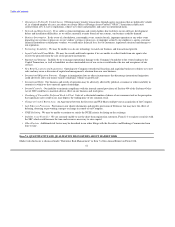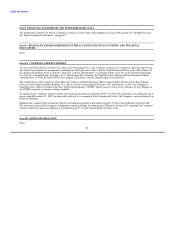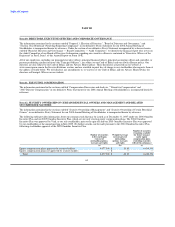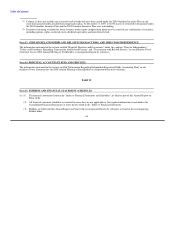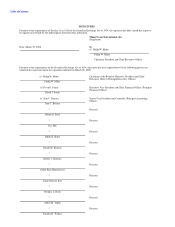MoneyGram 2007 Annual Report Download - page 59
Download and view the complete annual report
Please find page 59 of the 2007 MoneyGram annual report below. You can navigate through the pages in the report by either clicking on the pages listed below, or by using the keyword search tool below to find specific information within the annual report.
Table of Contents
Company's other asset-backed securities. Subsequent to December 31, 2007, we sold substantially all of our investments classified as
other asset-backed securities. At the date of this filing, we continue to hold investments classified as other asset-backed securities with a
fair value of $101.4 million at December 31, 2007. Using the highest and lowest prices received as part of the valuation process described
above, the range of fair value for these securities was $84.9 to $152.2 million. At December 31, 2007, $87.8 million, or two percent, of
our investment portfolio was valued using internal pricing information. Of this amount, $52.0 million related to investments for which no
price was received from the third party pricing service or brokers. Had the Company used the third party price to value the remaining
$35.8 million of internally priced securities, the value of these investments would have ranged from $22.5 million to $58.2 million.
Other-Than-Temporary Impairment — Investments with gross unrealized losses at the measurement date are subject to the Company's
process for identifying other-than-temporary impairments in accordance with SFAS No. 115, Emerging Issues Task Force ("EITF") Issue
No. 99-20, Recognition of Interest Income and Impairment on Purchased and Retained Beneficial Interests in Securitized Financial
Assets and Staff Accounting Bulletin No. 59, Views on Accounting for Noncurrent Marketable Equity Securities. The Company writes
down to fair value investments that it deems to be other-than-temporarily impaired through a charge against earnings in the period the
securities are deemed to be impaired. Under SFAS No. 115, the assessment of whether such impairment has occurred is based on
management's evaluation of the underlying reasons for the decline in fair value at the individual security level. The Company deems an
individual investment to be other-than-temporarily impaired when the underlying reasons for the decline in fair value have made it
probable in management's view that the Company will not receive all of the cash flows contractually stipulated for the investment. The
Company regularly monitors its investment portfolio to ensure that investments that may be other-than-temporarily impaired are
identified in a timely manner and that any impairments are charged against earnings in the proper period. Pursuant to the Company's
review process, changes in individual security values and credit risk characteristics are regularly monitored to identify potential
impairment indicators.
For all investments, the Company assesses market conditions, macroeconomic factors and industry developments each period to identify
any impairment indicators. If an impairment indicator is identified, the Company performs a credit assessment of the impacted
investments. In addition, the Company performs a credit assessment for any investment with a rating downgrade during the period. In
addition, the Company reviews all investments meeting established thresholds and monitoring criteria to identify investments that have
indications of potential impairments or unfavorable trends that could lead to future potential impairments. These thresholds and
monitoring criteria include investments: with a fair value significantly less than amortized cost, in an unrealized loss position for more
than twelve months, with a rating downgrade from the prior review or with a significant decline in fair value from the prior review.
The Company also performs a periodic credit risk assessment for each of its asset-backed securities under a systematic methodology, with
the exception of investments backed by U.S. government agency securities. The methodology employs a risk-driven approach, whereby
securities are assigned to risk classes based on internally defined criteria. The risk classes drive the frequency of the review, with
investments in the highest risk class reviewed monthly.
In assessing an investment with impairment indicators for other-than-temporary impairment, the Company evaluates the facts and
circumstances specific to the investment, including, but not limited to, the following:
• evaluation of current and future cash flow performance;
• reason for decline in the fair value of the investment;
• actual default rates of underlying collateral;
• subordination available as credit protection on the Company's investment in a securitized transaction;
• credit rating downgrades on both the Company's investment and the underlying collateral to the investment;
• extent of unrealized loss and the length of time the investment has been in an unrealized loss position;
• failure of structured investments to meet minimum coverage or collateralization tests;
56



